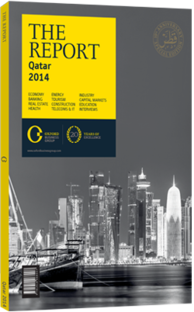Cultural significance: Fostering an artistic space from the ground up
Qatar’s National Vision 2030 (QNV) – the state’s ambitious development programme – begins not with a discussion of transportation networks or oil and gas plant construction, but with a statement that exemplifies the Qatari authorities’ clear focus on promoting local culture. Indeed, while investors from around the globe are involved in projects in the state that range from metro stations to gas-to-liquids technology, the QNV centres the rationale for all of this on wider human and social development.
Importance
Investment in culture – both in its preservation in a globalising world, and in cultural innovation and creativity – is seen as central to Qatar’s future. The impact of this philosophy is widely visible in Doha, from the Museum of Islamic Art (MIA) and its presentation of priceless historical artefacts, to the largest collection in the world of the work of modern artist Damien Hirst, formerly at the Al Riwaq Exhibition Centre. Qatari’s investment in art has become a global phenomenon, with Sheikha Al Mayassa bint Hamad bin Khalifa Al Thani, daughter of the Father Emir and chair of the Qatar Museums Authority (QMA), widely recognised as the most powerful female patron of the art world today.
As an example of the state’s presence, Qatar’s world-record purchase of one of five versions of Paul Cézanne’s “The Card Players” for over $250m grabbed headlines in 2012. Other versions of the painting are at the Metropolitan Museum of Art in New York, the Musée d’Orsay in Paris, the Courtauld Gallery in London, and the Barnes Foundation in Philadelphia in the US. The country again made news in November 2013 when it reportedly purchased Francis Bacon’s “Three Studies of Lucian Freud” in an auction for $142m.
Cultural Terms
However, for investors, such activity is only the most high profile sign of Qatar’s construction and provisioning of major, global-level intellectual and cultural infrastructure. The rationale for Qatar’s focus on art and collection flows from the QNV into the current, shorter term plan, the 2011-16 National Development Strategy (NDS). This plan sees culture as both a goal of the QNV and an enabler in the achievement of other goals. One example is the role of culture in helping support talent development and creativity – an important part of Qatar’s QNV goal of boosting education and training. This in turn is vital in shifting the state towards a knowledge-based economy and away from hydrocarbons dependency.
Building Up
The NDS sets a number of specific targets for the culture sector for the strategy’s lifetime.
These include a culture grants programme, aiming to sponsor at least 15 major projects; implementation of at least five culture-related initiatives with media partners; a major review of laws relating to archaeology and heritage; establishment of a visual arts and design high school and experimental pilot art and design programmes in five other schools; a study on theatre and support for some “quick win” projects in this field; closer and more effective monitoring and study of cultural activity; and improvement of the country’s profile as an art and culture hub.
In brick-and-mortar terms, culture sector development has meant construction of a host of venues, from museums to exhibition and performance spaces, with still more likely to come. In addition to the MIA, the Arab Museum of Modern Art (Mathaf) in Education City opened in 2010, with some 6000 exhibits. The National Museum of Qatar, currently being rebuilt, recently announced it will have an entire gallery – one of its 12 – dedicated to the oil and gas industry, and 2015 will also see the Qatar Olympics and Sports Museum (QOSM) open its doors.
The state has embarked on a genuine effort to develop its own cultural community, rather than simply import museums from elsewhere, while also seeing the creative industries as more likely to bear fruit if indigenous culture is both supported and able to interact with new, international influences. This may make for one of the most interesting and creative of all Qatar’s achievements in the drive towards 2030.
You have reached the limit of premium articles you can view for free.
Choose from the options below to purchase print or digital editions of our Reports. You can also purchase a website subscription giving you unlimited access to all of our Reports online for 12 months.
If you have already purchased this Report or have a website subscription, please login to continue.

